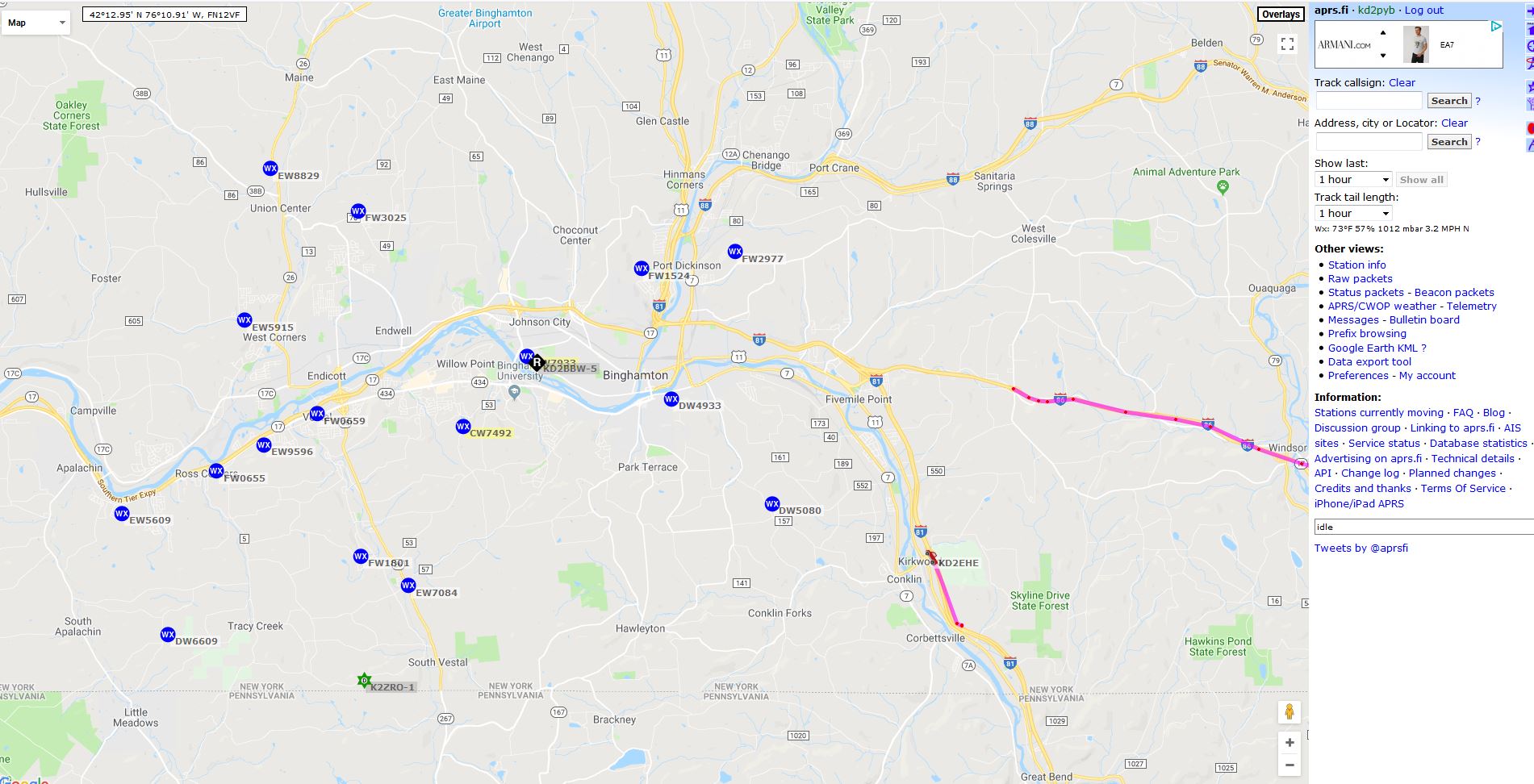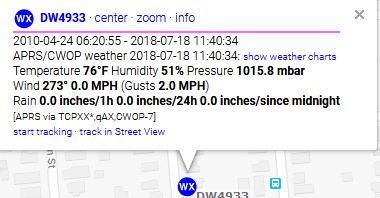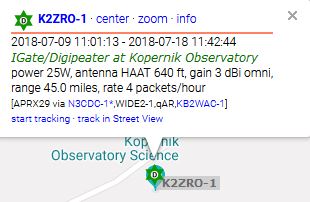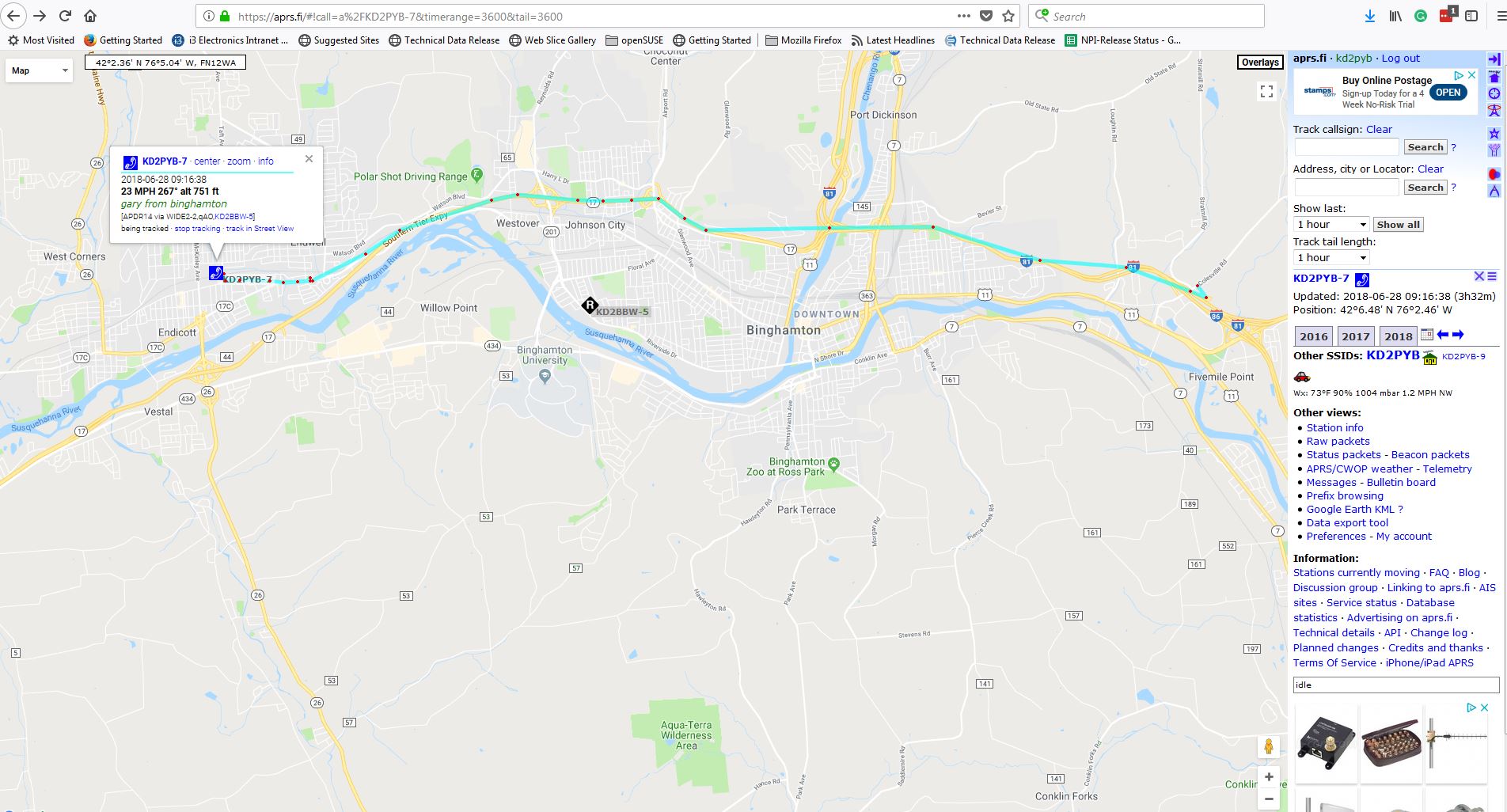I’ve recently acquired my amateur radio license (technical level) and joined the Binghamton Amateur Radio Association (BARA). BARA is based out of the Kopernik Observatory and Science Center, and among their fairly extensive collection of equipment is a 2 Meter Band Yaesu radio connected to a computer with a Terminal Node Controller (TNC), which performs digital repeating for their instance of APRS (Automatic Packet Reporting System). I worked on a project to migrate their current setup to a Raspberry Pi and tnc-pi based system , which meant that I got to learn about APRS!
APRS is a means of communicating real-time data using radio, such as weather information from weather stations, station/radio tracking via GPS (Global Positioning System) satellites, text messages, and more. The radio transmits a series of tones (which sound like a modem) to one or more digital repeaters, known as digipeaters, that take a radio signal broadcast from another station and re-transmit it to other stations. Some of these digipeaters may also be connected to the Internet to relay packets containing these signals over TCP/IP; such stations are called I-gates. You can see these stations and their positions on the website https://aprs.fi.
 Stations can choose what icon is used to represent them on this website – e.g. a blue ‘wx’ icon indicates a weather station. Clicking on the station brings up current local information such as reported temperature, humidity, wind speed, etc. – all reported with radio!
Stations can choose what icon is used to represent them on this website – e.g. a blue ‘wx’ icon indicates a weather station. Clicking on the station brings up current local information such as reported temperature, humidity, wind speed, etc. – all reported with radio!

A green star with a “D” in the center and a callsign usually indicates a digipeater station – i.e., a station that listens for packets and retransmits them to other stations. Clicking on the star brings up other information such as equipment used, comments, last active date/time, packet path, etc. If it is an I-gate, it may receive packets from the internet and retransmit them over radio, or vice-versa.
Some stations may use “cars/trucks/phone” as their icon to indicate mobile operation, where vehicles transmit GPS data indicating their current location to allow aprs.fi to track them. This method can also be used in high altitude weather balloons to aid in tracking them for recovery once they’ve landed! Sometimes mobile amateur radio operators give comments about what frequencies they are monitoring or talking on, to allow other operators to easily communicate with them.
There is a lot of other information on this website as well, including messages and raw packet data. Since these packets are relayed between repeaters without encryption, it is important to note that any messages/data transmitted in this fashion are not private; and, if the receiving station is not “online” (on the air), they will not receive the message.
So, what uses are there for APRS besides weather, position tracking, and finding other amateur radio operators to talk with? Turns out that there are a few interesting use scenarios. If an operator sends a message to the call sign “SMSGTE”, they can send a text message to any cell phone user! Or, if an operator sends a message to “EMAIL-2”, they can send an email to anyone! This means an amateur radio operator can send text messages and email without having cell phone service! There are even a few digipeaters on satellites and on the International Space Station (although as of this writing the ISS digipeater is not currently operational)!
I’m still learning a lot about radio and APRS, and all of the cool things you can do with them. If you’d like to learn more about APRS, please check out http://www.aprs.org/


